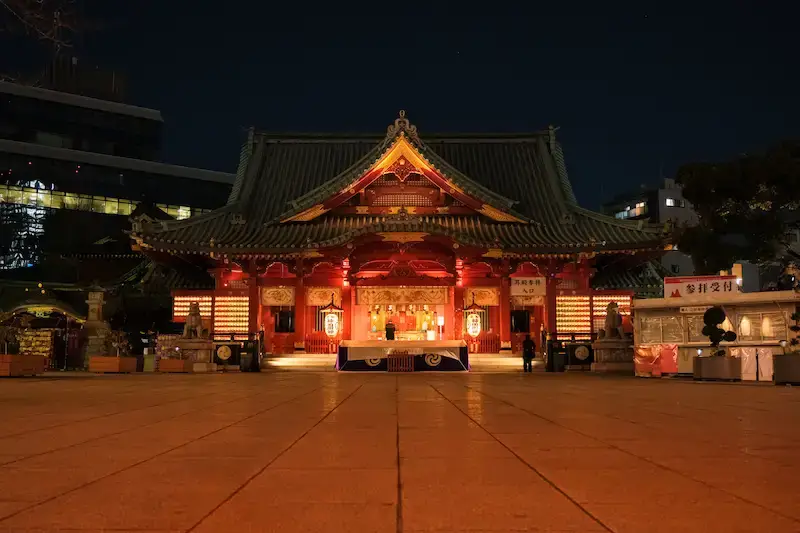What is a Shrine? Understanding the Meaning and Purpose
(神社・聖堂とは何か?その意味と目的を理解する)
Definition of a Shrine
(神社・聖堂の定義) A shrine is a sacred place dedicated to a deity, spirit, or revered figure, where people go to offer prayers and seek blessings. Shrines exist in various religions, including Shinto, Christianity, Hinduism, and Buddhism. (神社・聖堂とは、神や精霊、尊敬される人物を祀る神聖な場所であり、人々が祈りを捧げたり、ご利益を求めたりする場所です。神社は神道、キリスト教、ヒンドゥー教、仏教などさまざまな宗教で存在します。)
Etymology: Where Does the Word ‘Shrine’ Come From?
(語源:「Shrine」という言葉の起源) The word “shrine” originates from the Latin word sacrarium, meaning a sacred place or container for holy relics. Over time, it evolved into its modern usage, referring to religious sites dedicated to divine beings or significant figures. (「Shrine」という言葉は、ラテン語の sacrarium に由来し、「神聖な場所」や「聖遺物を納める場所」という意味を持ちます。時代とともに、その意味は進化し、現在では神聖な存在や重要な人物を祀る宗教的な場所を指します。)
Types of Shrines Across Different Religions
(異なる宗教における神社・聖堂の種類)
- Shinto Shrines (Japan): Dedicated to kami (Shinto deities) and feature torii gates. (神道の神社(日本):神(神道の神々)を祀り、鳥居が特徴)
- Christian Shrines: Often built to honor saints, the Virgin Mary, or sites of miracles. (キリスト教の聖堂:聖人や聖母マリア、奇跡の場所を記念するもの)
- Hindu Shrines: Found in temples and homes, dedicated to various gods and goddesses. (ヒンドゥー教の聖堂:寺院や家庭内にあり、多様な神々を祀る)
- Buddhist Shrines: Feature Buddha statues and relics, serving as places for meditation. (仏教の聖堂:仏像や仏舎利を安置し、瞑想の場として機能する)
What is the Purpose of a Shrine?
(神社・聖堂の目的とは?) Shrines serve multiple purposes depending on the religion and culture:
- Spiritual connection: A place to communicate with divine beings. (精神的なつながり:神聖な存在と交流する場)
- Worship and prayer: People visit to offer prayers and seek blessings. (礼拝と祈願:人々が祈りを捧げ、ご利益を求める)
- Pilgrimage destination: Many shrines attract pilgrims from around the world. (巡礼地:世界中の巡礼者が訪れる)
- Cultural heritage: Shrines preserve historical and religious traditions. (文化遺産:歴史的・宗教的な伝統を守る)
What Makes a Shrine Different from a Temple?
(神社と寺院の違いとは?)
- Shrines are primarily associated with Shinto, Christianity, and Hinduism, while temples are mainly found in Buddhism and Hinduism. (神社は主に神道・キリスト教・ヒンドゥー教に関連し、寺院は主に仏教・ヒンドゥー教に見られる)
- Shrines often contain torii gates (Shinto) or sacred relics, while temples have large prayer halls and statues of deities. (神社には鳥居(神道)や聖遺物があり、寺院には大きな礼拝堂や神の像がある)
Famous Shrines Around the World and Their Significance
(世界の有名な神社・聖堂とその重要性)
Famous Shinto Shrines in Japan
(日本の有名な神社)
- Ise Jingu (Mie): The most sacred Shinto shrine, dedicated to Amaterasu. (伊勢神宮(三重):天照大神を祀る最も神聖な神社)
- Fushimi Inari Taisha (Kyoto): Known for its thousands of torii gates. (伏見稲荷大社(京都):千本鳥居で有名)
- Meiji Jingu (Tokyo): Dedicated to Emperor Meiji and Empress Shoken. (明治神宮(東京):明治天皇と昭憲皇太后を祀る)
Famous Christian Shrines
(キリスト教の有名な聖堂)
- Lourdes (France): A pilgrimage site associated with the Virgin Mary. (ルルド(フランス):聖母マリアに関連する巡礼地)
- Santiago de Compostela (Spain): The endpoint of the Camino de Santiago pilgrimage. (サンティアゴ・デ・コンポステーラ(スペイン):カミーノ・デ・サンティアゴ巡礼の終着点)
Famous Hindu and Buddhist Shrines
(ヒンドゥー教・仏教の有名な聖堂)
- Varanasi (India): One of the holiest Hindu pilgrimage sites. (バラナシ(インド):最も神聖なヒンドゥー教の巡礼地の一つ)
- Shwedagon Pagoda (Myanmar): A sacred Buddhist shrine housing relics of Buddha. (シュエダゴン・パゴダ(ミャンマー):仏陀の遺物を安置する仏教の聖堂)
How to Show Respect When Visiting a Shrine
(神社・聖堂を訪れる際のマナー)
- Dress modestly: Many shrines require respectful attire. (適切な服装を着用する)
- Follow local customs: Some shrines have specific rituals for visitors. (地域の習慣に従う)
- Avoid loud behavior: Maintain a quiet and respectful attitude. (大声を出さず、静かに敬意を持つ)
【Conclusion】Key Takeaways
(この記事でわかる12のこと)
- A shrine is a sacred place for worship and prayer. (神社・聖堂は礼拝と祈りのための神聖な場所)
- The word “shrine” comes from the Latin sacrarium. (「Shrine」の語源はラテン語の sacrarium)
- Shrines exist in Shinto, Christianity, Hinduism, and Buddhism. (神道、キリスト教、ヒンドゥー教、仏教に神社・聖堂が存在する)
- Shinto shrines are dedicated to kami (Shinto deities). (神道の神社は神(神道の神々)を祀る)
- Christian shrines honor saints or sites of miracles. (キリスト教の聖堂は聖人や奇跡の地を記念する)
- Hindu and Buddhist shrines house sacred relics and deities. (ヒンドゥー教・仏教の聖堂は聖遺物や神々を安置する)
- Shrines and temples have different architectural features. (神社と寺院には異なる建築的特徴がある)
- Many shrines are pilgrimage destinations. (多くの神社・聖堂は巡礼地である)
- Respectful behavior is important when visiting shrines. (神社・聖堂を訪れる際には礼儀正しい態度が必要)










